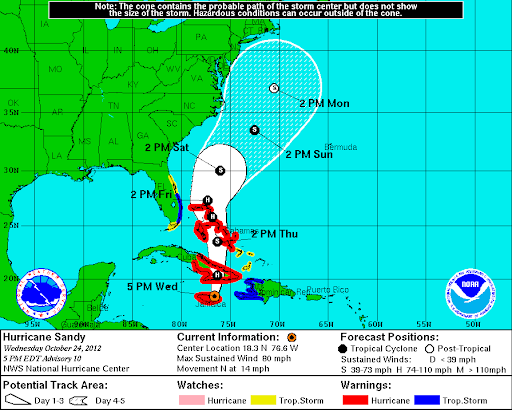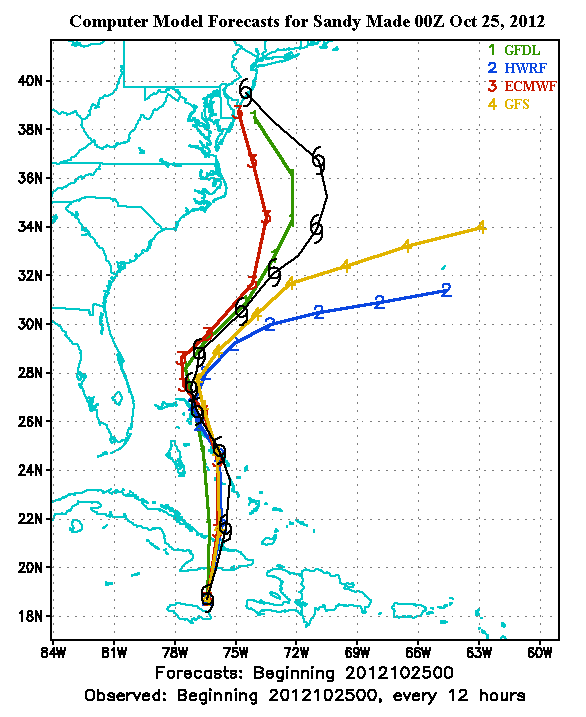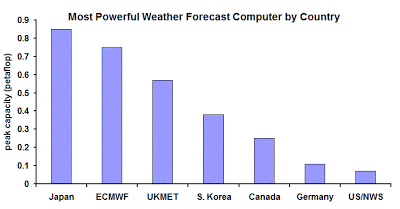The demand for computational speed
Overview
Teaching: 0 min
Exercises: 0 minQuestions
Why do we need faster computing platforms?
Objectives
Know standard computational speed measurements
Know representative examples of how large-scale computation servers science, industry, business, and society.
How do we measure speed in computation?
- Floating-Point Operation per Second (FLOPS)
- Count number of floating-point calculations (arithmetic operations) per second.
- Not MIPS (millions of instructions per second) as MIPS also count non-arithmetic operations such as data movement or condition.
- MFLOPS (megaFLOPS) = 1,000,000 FLOPS
- GGLOPS (gigaFLOPS) = 1,000,000,000 FLOPS
Modern measurement of speed
- TFLOPS (teraFLOPS) = 1,000,000,000,000 FLOPS
- Intel’s ASCI Red for Sandia National Laboratory (DOE) was the first supercomputer in the world to achieve 1 TFLOPS in 1997.
- ASCI Red is used for large-scale simulation in nuclear weapon development and material analysis.
- PFLOPS (petaFLOPS) = 1,000,000,000,000,000 FLOPS
- IBM RoadRunner for Los Alamos National Laboratory (DOE) was the first supercomputer to achieve 1 PFLOPS in 2008.
- Oak Ridge National Laboratory’s Summit (DOE) is the second fastest supercomputer in the world at 148.6 PFLOPS.
- Fugaku of RIKEN Center for Computational Science (Japan) is the current fastest supercomputer at 415 PFLOPS.
- EFLOPS (exaFLOPS) = 1,000,000,000,000,000,000 FLOPS
- Aurora (> 1 EFLOPS, 2021, Argonne National Lab)
- Frontier (> 1.5 EFLOPS, 2021, Oak Ridge National Lab)
- El Capitan (> 2 FFLOPS, 2023, Lawrence Livermore National Lab)
- Tianhe 3 (first China Exascale computer, 2020, National University of Defense Technology)
- Subsequent update to Fugaku (first Japan Exascale computer, 2021, RIKEN Center for Computational Science)
- Europe, India, Taiwan on track
The bragging list (The TOP500 Project)
- List the 500 most powerful computers in the world.
- Count FLOPS by having supercomputer runs well-known computationally intensive tasks
- Solve Ax=b, dense random matrix problem.
- Primarily dense matrix-matrix multiplications.
- Updated twice a year:
- International Supercomputing conference (June, Germany)
- Supercomputing conference (November, US).
- Website: http://www.top500.org
Why do we need this much speed?
- The four modern paradigms of science
- Theory
- Experiment
- Simulation
- Data analysis
- Simulation: study things that are too big, too small, too fast, too slow, too expensive, or too dangerous.
- Data anlaysis: study data that are too big, too complex, too fast (streaming data), too noisy.
Faster computer gives more details
Hurricane Sandy (2012)
- the deadliest and most destructive, as well as the strongest hurricane of the 2012 Atlantic hurricane season,
- the second-costliest hurricane on record in the United States (nearly $70 billion in damage in 2012),
- affected 24 states, with particularly severe damage in New Jersey and New York,
- hit New York City on October 29, flooding streets, tunnels and subway lines and cutting power in and around the city.
Various forecasts of Sandy
- Geophysical Fluid Dynamic Laboratory hurricane model (National Oceanic and Atmostpheric Administration)
- Hurricane Weather Resaarch and Forecasting model (NOAA/Naval Research Laboratory/Florida State University)
- European Centre for Medium Range Weather Forecast model (ECMWF)
- Global Forecast Model (National Weather Service)
- Which model is closest to reality?
One of the contributing factors
- http://blogs.agu.org/wildwildscience/2013/02/17/seriously-behind-the-numerical-weather-prediction-gap/
The US has catched up
- NOAA Weather Computer upgrade
- Two new supercomputers, Luna and Surge
- 2.89 PFLOPS each for a total of 5.78 PFLOPS (previous generation is only 776 TFLOPS)
- Increase water quantity forecast from 4000 locations to 2.7 million locations (700-fold increase in spatial density)
- Can track and forecast 8 storms at any given time
- 44.5 million dollars investment
Covid and HPC
- US HPC Consortium to contribute to Covid research
- Many other work (published in Nature) include supercomputing usages for molecular dynamic simulation/data analysis.
Manufacturing and HPC
- For 767 development, Boeing built and tested 77 physical prototypes for wing design.
- For 787 development, only 11 prototypes were built.
- Optimized via more than 800,000 hours of computer simulation.
Oil and Gas Expoloration improvement with HPC
- Los Alamos National Lab
- Development of large-scale data analytic techniques to simulate and predict subsurface fluid distribution, temperature, and pressure
- This reduces the need for observation wells (has demonstrated commercial success)
Fraud Detection at PayPal
- 10M+ logins, 13M+ transactions, 300 variables per events
- ~4B inserts, ~8B selects
- MPI-like applications, Lustre Parallel File Systems, Hadoop Saved over $700M in fraudulent transactions during first year of deployment
Key Points
Computational speed is critical in solving humanity’s growing complex problems across all aspects of society.


